
Characteristics
- The average temperature of the sub alpine ecosystem is 42.05 degrees.
- The elevation is 9500-11500 feet. 2743-3505 in meters.
- The average high is 55.8 degrees.
- The average low is 28.3 degrees.
- The average precipitation is 24.89 inches every year.
Major Producers
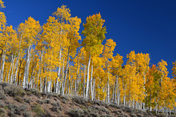
- The Quaking Aspen is from 40-100 feet tall. They have smooth white bark. These trees can live for a very long time. It grows on moist uplands, dry mountainsides and high plateaus. They are deciduous
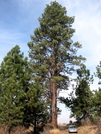
- The ponderosa pine is one of the biggest pine trees out there. They are a greenish color. The ponderosa pine protect itself using it’s needles. These needles contain several compounds, that are stored in intracellular compartments. This helps the tree because when an animal chews on it’s pine needles it crushes its compartments. This tree is coniferous.
- The engelmann spruce are native trees growing up to 60 meters tall. They have a strong green color to their needles. I think they are very cool trees. They have a strong structure. This tree is not deciduous, they are conifers, they range from Alaska to New Mexico. Again these conifers also can live throughout the seasons with the same adaptations as the Colorado Blue Spruce.
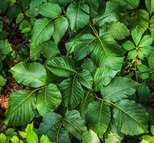
- Poison Oak and Poison Ivy are usually mixed up. There are two kinds of Poison Plants. Poison Ivy makes a very painful itchy rash to who ever touches it’s three leafed petals. The petals have little fringes that cause the stinging sensation. The are low growing plants, and range all around the U.S. They have a stinging sensation so animals don't want to eat them. It is deciduous.

- The Colorado Blue spruce has silvery green pine needles and has magnificent colors and structures. They are conifers. It ranges through the western United States. It is not deciduous. Its long needles take in water throughout the year and can also process snow so they don't have to lose their leaves.
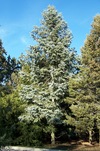
- It has a odd but nice shape and grows to 30-50 feet tall. The white fir grows around 12-24 inches a year until it is at it’s full size. It also needs lots and lots of sunlight and will not survive without lots of sunlight. It is not deciduous. The grow in the western united states. The grow very thick trunks so wind and heavy rain storms do not affect them.
Major Consumers

- Mountain lions eat deer, rabbits and other small animals. They have a golden brown body that camouflages them so they can hunt quickly and easily. Also they have deep colored eyes.
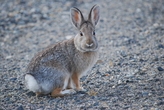
- Cotton Tail Bunny
- Food: grass,seeds,sagebrush,leaves, juniper berries, and needles.
- Shelter: Use dens that other animals have dug and abandoned while nursing young, then line the den with fur to make it soft and warm.
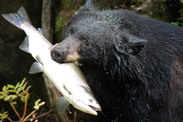
- Black bears eat fish, berries, nuts, grass, apples, and honey. They eat a lot so that the can sleep all through the winter without getting hungry. This is called hibernation. Their shelters are in dens that are under trees or cliffs. They rest at the base of trees or in treetops in summer.
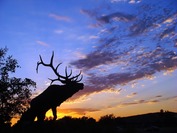
- Elk eat seeds which are 50% of elk's diet. They also eat berries, leaves, stems, insects, and carrion if available. They live at the forest edge or in rocky areas. Elk eat bark in the winter when other food is covered in snow. They have no upper front teeth. They leave two vertical scars where they scrape the bark off with their lower teeth.
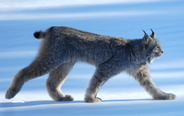
- The lynx diet contains of Snowshoe Hare, birds, pine squirrel, mice, ground squirrel, beaver, muskrat, young deer and elk. They live in dens under ledges, fallen tree or in caves. They find cover under evergreens in bad weather.
- Pocket gophers live in a hole under the ground they dig with their sharp teeth and with their nails. They use their tail to keep them clean. They have small ears,so they can go through small tunnels easily. Their tunnels are usually close to the surface,so that they can eat plant roots.
Birds

- Great-horned Owls depend on silent flight to surprise their prey. Their lead flight feather is fringed which quiets the wind as it passes over the wing. These features allow all owls to flap their wings silently. By comparison, a flapping raven wing stirs up the air causing it to pass loudly through and around the straight, stiff flight feathers.
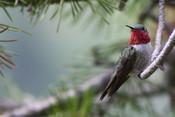
- Male Broad-tailed Hummingbirds have a bright red patch under their chins called a gorget. The bright color however is only visible when the bird is facing directly towards the observer because the gorget feathers are not actually red. Instead the tiny feathers are arranged in angles that reflect red light. Hummingbirds mostly eat flower nectar, insects, spiders, and tree sap from Sapsucker wells.
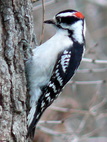
- There are two types of woodpeckers the Downy Woodpecker and the Hairy Woodpecker. Hairy Woodpeckers are much larger than Downy Woodpeckers . The males have a red spot on their heads but the females don’t. Downy Woodpeckers feed from small branches and the males also have red spots on their heads while the females do not.

- The sign of these adult Red Tailed Hawks are a reddish-brown tail but the young hawks up to two years old have brown tail feathers. Red-tailed hawks live in almost every state no matter where you live it is very likely that the red-tail hawk lives there. They normally soar on warm rising winds over open fields where they hunt for small mammals. These birds eat small to medium-sized animals such as rodents, rabbits, hares, birds, and snakes.

- The chickadee is about the size of a third grader’s fist. They are easy to identify and are commonly spotted. They have white breasts and have black unique feather’s on their head. Chickadees eat constantly from dawn to dusk. Even when they are not hungry they still like to store food in cracked tree bark. These birds may not come back to their storage for weeks or days but when there is barely any food they have to rely on the food stored to eat. They mainly eat insects, seeds, dried berries, and fat from dead animals.
- Robins are everywhere! They commonly live near humans in suburban areas making them one of the most commonly observed birds. These birds however do not only live in the suburbs. Robins are equally abundant in forests from low-elevation aspen groves up to subalpine forests near treeline.
Human Impacts
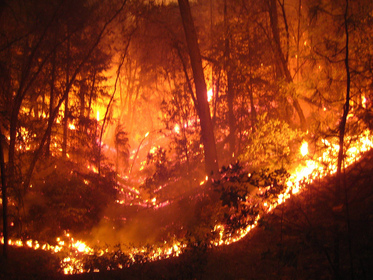
- Human created wildfires are destroying the forests around us. But not only here in Aspen. In the U.S. many forests have been destroyed. At least 50 wildfires in the west have occurred in the last 4 years.
- All of the cars that use gas are killing the forests in the subalpine zones all around the world. Our town is a great town though all of our electricity come from renewable energy.
- Many people love to fish but killing so many fish is hurting other animals other than the fish. Also over hunting hurts lots of predators. Animals only hunt when they are hungry but we are the only things on earth that hunt for fun.
- Water in the subalpine has been diverted over the years and watering holes are disappearing. Some of this comes from humans. Drought also lessens the amount of water. We are ruining nature's way of getting water other places that need this wet source.
